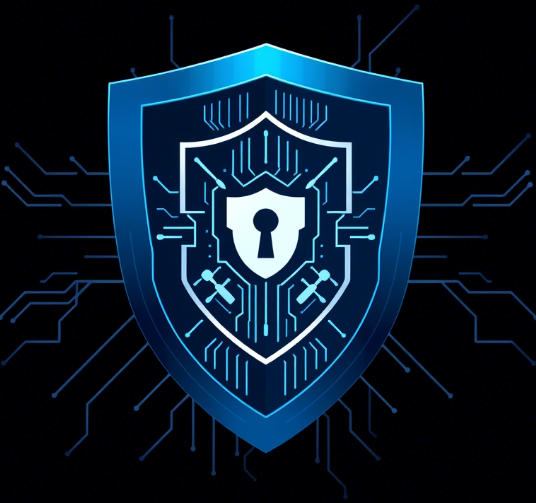Your cart is currently empty!
Basic – Access – IP Network – Services – Security – Automation
Network access refers to the process of connecting a device or system to a computer network, allowing it to communicate and exchange data with other devices on the network. It involves the use of various hardware and software components, protocols, and security measures to establish a secure and reliable connection. Network access can be divided into two main categories:
Wired | Wireless
Wired Network Access:
Wired network access typically involves the use of physical cables to connect devices to the network infrastructure. Common wired network access technologies include:
Ethernet: Ethernet is the most widely used wired network access technology. It uses twisted pair copper or fiber optic cables to transmit data between devices. Ethernet networks employ various standards such as 10BASE-T, 100BASE-TX, and Gigabit Ethernet, offering different data transfer rates.
Power over Ethernet (PoE): PoE allows both power and data to be transmitted over Ethernet cables. It eliminates the need for separate power cables, making it convenient for devices such as IP cameras, wireless access points, and VoIP phones.
Fiber Optics: Fiber optic cables use light signals to transmit data over long distances at high speeds. They offer higher bandwidth and are resistant to electromagnetic interference, making them suitable for high-performance network applications.
Coaxial Cable: Coaxial cables are commonly used for cable television (CATV) and broadband internet access. They consist of a central conductor surrounded by insulating and shielding layers, providing reliable data transmission.
Wireless Network Access Wireless network access allows devices to connect to a network without the need for physical cables. It relies on wireless signals to transmit and receive data. Some key wireless network access technologies include: Wi-Fi: Wi-Fi (Wireless Fidelity) is a popular wireless network access technology based on IEEE 802.11 standards. It enables devices to connect to a network within a specific range, typically a few hundred feet. Wi-Fi networks are commonly found in homes, offices, public spaces, and other environments. Bluetooth: Bluetooth technology is primarily used for short-range wireless communication between devices. It is commonly used for connecting peripherals like keyboards, mice, speakers, and smartphones to a computer. Cellular Networks: Cellular networks, such as 3G, 4G, and 5G, provide wireless network access for mobile devices. They use cellular towers to establish connections over large geographic areas, enabling devices to access the internet and make phone calls. Satellite Networks: Satellite networks provide wireless network access in areas where wired or terrestrial wireless infrastructure is unavailable. They use satellites in space to transmit and receive data, offering coverage over vast regions, including remote and rural areas.
Network Access Control (NAC) is an important aspect of network access. It involves the implementation of security measures to ensure that only authorized devices and users can access the network. NAC solutions typically include authentication mechanisms, such as username and password, digital certificates, or biometrics, to verify the identity of devices and users. Additionally, NAC may enforce security policies, such as firewall rules, access permissions, and encryption standards, to protect the network from unauthorized access, data breaches, and other security threats. Network access encompasses the technologies and protocols used to connect devices to computer networks, both wired and wireless. It plays a crucial role in enabling communication, data exchange, and internet connectivity, while also addressing security concerns to maintain the integrity and confidentiality of network resources.
Basic – Access – IP Network – Services – Security – Automation A basic network is a group of interconnected devices, such as computers, servers, printers and IoT devices those
Ultimate Guide to Eddie Enhanced DNS Server: Installation, Configuration, and Troubleshooting Eddie Enhanced DNS Server is a robust, feature-rich DNS server designed for high performance, flexibility, and scalability. It is
Comprehensive Guide to Knot DNS with Real-World Examples Knot DNS is a high-performance, authoritative-only DNS server developed for modern DNS needs. It is lightweight, efficient, and scalable, making it a
Comprehensive Guide to DNSmasq on Ubuntu DNSmasq is a lightweight, versatile DNS forwarder and DHCP server designed for small-scale networks. It’s ideal for home networks, small business setups, and even
You can modify the content of a file using the power shell. # Define the file path $filePath = “C:\path\to\your\file.txt” # Define the new content you want to add to
Introduction UFW (Uncomplicated Firewall) is a front-end for iptables, aiming to simplify the process of configuring a firewall on Ubuntu. It provides an easy way to manage inbound and outbound
Table of Contents: 1. Introduction to VPNs and Their Importance 2. Overview of VPN Protocols – IPsec – OpenVPN – WireGuard 3. Understanding VPN Encryption – AES (128-bit vs 256-bit)
Introduction to Linux Why Learn Linux? Getting Started with Linux: Free Resources Overview Best YouTube Channels for Learning Linux Top Websites for Learning Linux Using Games to Learn Linux Best
Introduction – Overview of Encryption in Modern IT– Definition and importance of encryption in data security.– Historical perspective: From early cryptography to modern encryption methods.– The evolving landscape: Why encryption
Understanding Cron and Cron Jobs Cron is a time-based job scheduler in Unix-like operating systems. Users can schedule jobs (commands or scripts) to run periodically at fixed times, dates, or
To set up a Docker-based monitoring and logging stack with Grafana, Prometheus, and Loki, targeting Windows Server 2019 and 2022, you can follow this guide. This configuration involves setting up
